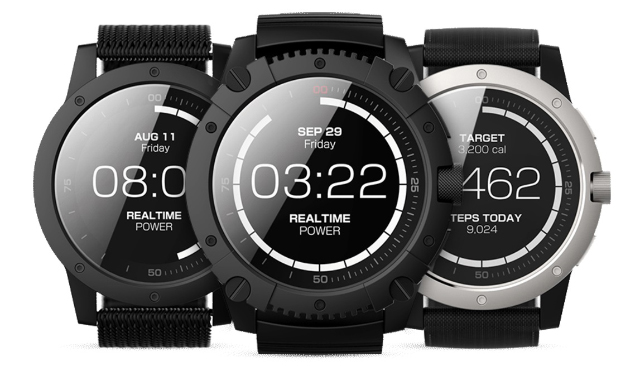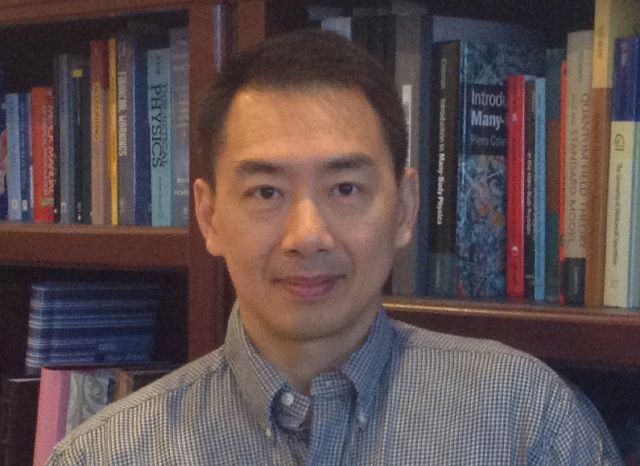Re-engineering interstellar technology into a smartwatch that never needs to be recharged
The NASA Voyager 1 space probe, the only man-made object to ever enter interstellar space, is zipping through the cosmos at 40,000 miles per hour as it explores the outer boundary of the heliosphere, nearly 12 billion miles from Earth.
Haifan Liang, Ph.D. ’98, has re-engineered the same power generation technology NASA utilized in that spacecraft into a smartwatch that never needs to be recharged.
Liang, who studied applied physics at the Harvard John A. Paulson School of Engineering and Applied Sciences (SEAS), serves as vice president of technology at Matrix Industries, where he heads the development of novel thermoelectric materials and applications.
Thermoelectric materials convert heat directly into electrical energy for power generation. That’s useful when a spacecraft billions of miles from the sun can’t rely on solar energy, Liang said. But such material are also well suited for wrist-worn consumer devices that can generate power from a user’s body heat.
The company’s first product, the Matrix PowerWatch, is a thermoelectric smartwatch that measures calories burned, activity level, sleep, and how much electrical power a user is generating.
“Many people don’t regularly wear the smartwatches they purchase because they forget to recharge them and they run out of battery life so quickly,” he said. “We saw that consumer pain point as an opportunity for innovation.”

The Matrix Powerwatch is a thermoelectric smartwatch that never needs to be charged. (Photo provided by Haifan Liang.)
Innovation was necessary to make a space-going technology ready for consumer markets. Thermal engineering is required to maximize the temperature difference across the thermoelectric components, and ultralow voltage step-up converters are necessary to bring the small voltage generated to a useful range, he explained.
The rare metals NASA engineers use to develop thermoelectric materials are extremely expensive, preventing the widespread application of this technology. Liang, who joined Matrix Industries four years ago, brought a fresh perspective to this problem from his background in energy materials research. He credits his Ph.D. advisor, Roy Gordon, Thomas Dudley Cabot Professor Chemistry and Professor of Materials Science, with inspiring him to study energy-related materials. His thesis focused on transparent conducting oxides for solar energy and smart window applications.
“I learned that it is not easy to discover new materials that are actually useful,” he said. “But the area of energy materials is one that can have a far-reaching impact. We are all concerned about global warming and pollution, so working in a space where I could contribute to these important problems was a good fit for me.”
Liang has also worked in research and development positions related to semiconductors, material science, and, most recently, solar cell innovation. At his previous job, he led a team that invented a high-efficiency process to manufacture thin-film solar cells without the use of the pollutant sulfur, and demonstrated the power of fast experimentation using combinatorial approaches.
At Matrix Industries, Liang applied a problem-solving approach to thermoelectric technology, directing the development of a manufacturing process that reduces the thermal conductivity of silicon by about 100 times, while retaining the material’s high level of electrical conductivity. The process enables inexpensive silicon to be an efficient thermoelectric material, vastly reducing retail prices.
Liang, who spent his early career working in industry-focused scientific roles, enjoys the challenge of integrating technical elements into a consumer product that must be user-friendly and aesthetically pleasing.
The thermoelectric smartwatch may be just the tip of the iceberg, Liang said. As innovation drives microcontrollers and power boosting components towards ultra-low power, he foresees even more uses for thermoelectric materials, such as wearable medical devices that continually monitor a patient’s health status.
“In a setting like a stadium or a theme park, businesses may want to track the movement of customers by placing many ‘Internet of Things’ devices around the area,” he said. “With millions of sensors in place, it is very inefficient and costly to spend time running around changing batteries. Thermoelectric technology could solve that problem.”
As Liang continues to develop and refine cutting-edge technology, he said the passion for learning he developed at SEAS serves him well everyday. He credits this “student for life” mindset for much of his success in research and development.
“Discovering a new material or inventing a new process that no one has done before takes a lot of perseverance,” he said. “You have to keep trying and thinking until a breakthrough comes. If you work on something you enjoy, it is that much easier to keep pushing toward that breakthrough.”
